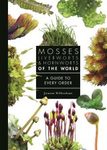Textbook
By: Erin N Bodine(Author), Suzanne Lenhart(Author), Louis J Gross(Author)
608 pages, 100 colour & b/w illustrations, tables
![Mathematics for the Life Sciences Mathematics for the Life Sciences]()
Click to have a closer look
About this book
Customer reviews
Biography
Related titles
About this book
The life sciences deal with a vast array of problems at different spatial, temporal, and organizational scales. The mathematics necessary to describe, model, and analyze these problems is similarly diverse, incorporating quantitative techniques that are rarely taught in standard undergraduate courses. Mathematics for the Life Sciences provides an accessible introduction to these critical mathematical concepts, linking them to biological observation and theory while also presenting the computational tools needed to address problems not readily investigated using mathematics alone.
Proven in the classroom and requiring only a background in high school math, Mathematics for the Life Sciences doesn't just focus on calculus as do most other textbooks on the subject. It covers deterministic methods and those that incorporate uncertainty, problems in discrete and continuous time, probability, graphing and data analysis, matrix modeling, difference equations, differential equations, and much more. Mathematics for the Life Sciences uses MATLAB throughout, explaining how to use it, write code, and connect models to data in examples chosen from across the life sciences.
Customer Reviews
Biography
Erin N. Bodine is assistant professor of mathematics at Rhodes College. Suzanne Lenhart is Chancellor's Professor of Mathematics at the University of Tennessee. Louis J. Gross is Distinguished Professor of Ecology and Evolutionary Biology and Mathematics at the University of Tennessee.
Textbook
By: Erin N Bodine(Author), Suzanne Lenhart(Author), Louis J Gross(Author)
608 pages, 100 colour & b/w illustrations, tables
"Textbooks are not always fun, but this one is [...] The engaging, colourful and sharp style of Mathematics for the Life Sciences makes it a refreshing new entry into the world of bioscience textbooks."
– George Pryn Ford, The Biologist
"This is the book I always wanted to write, a masterful and thorough introduction to the basic mathematical, statistical, and computational tools one needs to address biological problems, punctuated with solid and motivational applications to biology. The book is a seamless and authoritative treatment, with broad scope, that makes an ideal text for an introductory course."
– Simon A. Levin, editor of The Princeton Guide to Ecology
"This book presents mathematics as the Esperanto of science, which it truly is. The authors provide salient topics in understandable form, selecting examples that capture the interest of biologists. Mathematics for the Life Sciences is as useful as it is stimulating."
– Rita Colwell, University of Maryland Institute for Advanced Computer Studies
"This book does an admirable job of covering the mathematical topics that are essential for studying and analyzing biological systems. By bringing them together in a single coherent and well-written volume, the authors have produced a text that will truly serve undergraduate students in biology. The exercises are particularly well done."
– Alan Hastings, University of California, Davis
"This is a thorough, self-contained introductory textbook for training undergraduate students in basic mathematical and statistical methods that are important in biological sciences. Students are introduced to topics ranging from probability and statistics to matrix theory and calculus, with a brief introduction to modeling using difference and differential equations. Two unique features of this textbook are the inclusion of real-world biological data to motivate particular methods and the use of MATLAB for computational purposes."
– Linda J. S. Allen, Texas Tech University
"This spectacular book develops the reader's ability to quantitatively analyze problems arising in biology, and illustrates the great utility of mathematical models and computing to provide answers to key questions. The biological examples and student projects are excellent."
– Carlos Castillo-Chavez, Arizona State University
"This is a good introductory text for life sciences undergraduates who do not have a strong background in mathematics and need to familiarize themselves with core math concepts and their applications to biology. The problems and examples are well chosen, and the book is written in a style that is clear and makes it easy for students to use on their own."
– Joceline Lega, University of Arizona
"There are no other books quite like this one on the market. Other texts on the subject do not have nearly the amount of statistics and probability that this one has, nor do they do as much to help build practical MATLAB skills. The abundance of data-driven examples, exercises, and student projects also sets this book apart from its competitors."
– Trachette L. Jackson, University of Michigan


































